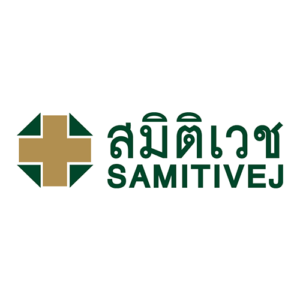1. What is a coronavirus?
Coronaviruses are a large family of viruses, which cause diseases ranging from a simple cold (some seasonal viruses are coronaviruses) to more severe diseases such as MERS or SARS. The virus identified in China is a new coronavirus. It has been referred to as 2019-nCoV.
2. What are the symptoms of respiratory infection caused by 2019-nCoV?
As things stand, the main symptoms are fever and respiratory signs such as coughing or shortness of breath. In more severe cases, the disease can lead to death.
3. Are there people at risk who may develop a severe form of the disease?
As with many infectious diseases, people with underlying chronic conditions (respiratory distress, frail people, elderly people, etc.) are at higher risk.
4. What is the mode of transmission?
The first cases identified are people who have gone directly to the Wuhan market (closed since 1 January): the hypothesis of zoonosis (disease transmitted by animals) is therefore preferred. In view of the new cases reported by the Chinese health authorities since 19 January, human-to-human transmission is now proven. The evolution of knowledge in the coming weeks will allow us to learn more about the modes of transmission of this virus, its level of transmission, its virulence, the incubation period and the animals that can be carriers.
5. What defined as a close contact in the context of the Chinese epidemic of 2019-nCoV?
There is close contact for a person who has shared the same place of life as the sick person when he or she has symptoms (family, same hospital or boarding room) or who has had direct contact, face to face, less than 2 metre from the person sick at the time of a cough, sneeze or during a discussion in the absence of effective protective measures.
6. What if you have been in contact with a non-symptomatic person from China?
As it stands, a non-symptomatic person cannot transmit the virus. Therefore, there is no specific recommendation.
Update Jan 29, (source: WHO): Detailed epidemiological information from more people infected is needed to determine the infectious period of 2019-nCoV, in particular whether transmission can occur from asymptomatic individuals or during the incubation period.
Current estimates of the incubation period of the virus range from 2-10 days, and these estimates will be refined as more data become available. Understanding the time when infected patients may transmit the virus to others is critical for control efforts.
7. When WHO talks about animal sources, could this theoretically include cooked meat or fish and all types of animals?
When the meat is cooked, the viruses are destroyed. Consumption of uncooked or uncooked animal products, including milk and meat, poses a significant risk of infection by a wide variety of organisms that can cause disease in humans.
Appropriately prepared animal products, cooking or pasteurizing them, can be consumed but must also be carefully preserved, to avoid cross-contamination with uncooked food.
8. What defines a “case”?
First, any patient with clinical signs of severe acute respiratory infection requiring hospitalization, and who had travelled or stayed in the city of Wuhan in China in the 14 days prior to the date of first clinical symptoms.
- Close contact with a confirmed case of infection in 2019-nCoV, while the infection was symptomatic;
- A co-exposed person, defined as having been subject to the same risks of exposure (i.e. a stay/trip to Wuhan, China) as a confirmed case;
- A person who has worked or stayed in a hospital in which a case of 2019-nCoV has been confirmed;
- A person who has visited or worked in a live animal market in Wuhan, China.
9. How is the diagnosis made?
The diagnosis is suspected before signs of respiratory infection in a person returning from China in the 14 days prior to the onset of symptoms, in accordance with the case definition.
A specific biological examination is required to confirm infection in 2019-nCoV. A rapid detection examination has been developed by the National Respiratory Virus Reference Centre. Available at Samitivej hospitals.
Correction, Jan 29: No, we cannot. Novel coronavirus testing can only be done by two laboratories in Thailand. However, due to very high demand for testing, the Department of Disease Control has placed restrictions on which testing requests should be processed. The admitting hospital is responsible for screening and triage of the patient, specimen collection, patient isolation and quarantine. This is likely to change in the future because more laboratories around the country are ramping up their testing capabilities, which will eventually relieve the testing bottleneck and decrease the time between specimen collection and return of the results (currently 48 hours).
In-house lab testing will eventually be available, but not in the near future. Like any new laboratory service, novel coronavirus testing must undergo several validation processes before receiving final approval.
10. What treatments are available?
To date, no specific treatment has been identified for this new coronavirus, treatment is symptomatic.
11. Can the disease be caught by water?
To date, there have been no reports of water contamination. This disease is respiratory transmission and probably from animal to human, but the source has not yet been identified.
12. Does the 2019-nCoV survive in the outdoor environment?
We do not have any scientific data for this virus to date. However, by analogy with other viruses of the same family, this virus is certainly able to remain infectious in the outside environment from a few hours to a few days, depending on the environment in which it is located. It is a virus wrapped and therefore by some aspects more fragile than other viruses.
Standard hygiene measures (hand washing, cleaning surfaces) are effective.
13. What is the contagiousness of the disease?
The degree of human to human spread outside of Hubei province remains unclear. A reproductive number, R0, is estimated at 1.4–2.5 by Chinese authorities and up to 5.5 by other scientists. An R0 greater than 1 indicates that each case leads to more than 1 subsequent case, making control much more difficult.
14. How severe is the disease?
Among the cases reported to date, several patients have developed a severe form of the disease, some of which have died.
Available information suggests that the virus may cause symptoms similar to moderate influenza, but also more severe symptoms. The disease can also progress over time in a patient. Patients with pre-existing chronic diseases such as hypertension, cardiovascular disease, diabetes, liver disease, respiratory diseases appear to be more likely to develop severe forms, as do people Older. But we still have a lot to learn about this virus and we will continue to analyze the available information on current and new cases.
15. From which distance can one person be contaminated by a coronavirus carrier?
The disease is transmitted through postillons (sneezing, coughing). Close contact (2 metre) is therefore considered necessary to transmit the disease.
16. Can the virus be transmitted through sexual fluids?
There is no evidence in favour of sexual fluid transmission at this stage.
17. Are items imported from China considered a risk?
Apparently not (this question was asked for avian influenza in 2004-2005 and for SARS). No cases of contamination with objects have been reported.
18. Are there any special measures for drugs produced in China?
There are no specific restrictions on the use of drugs from China.



